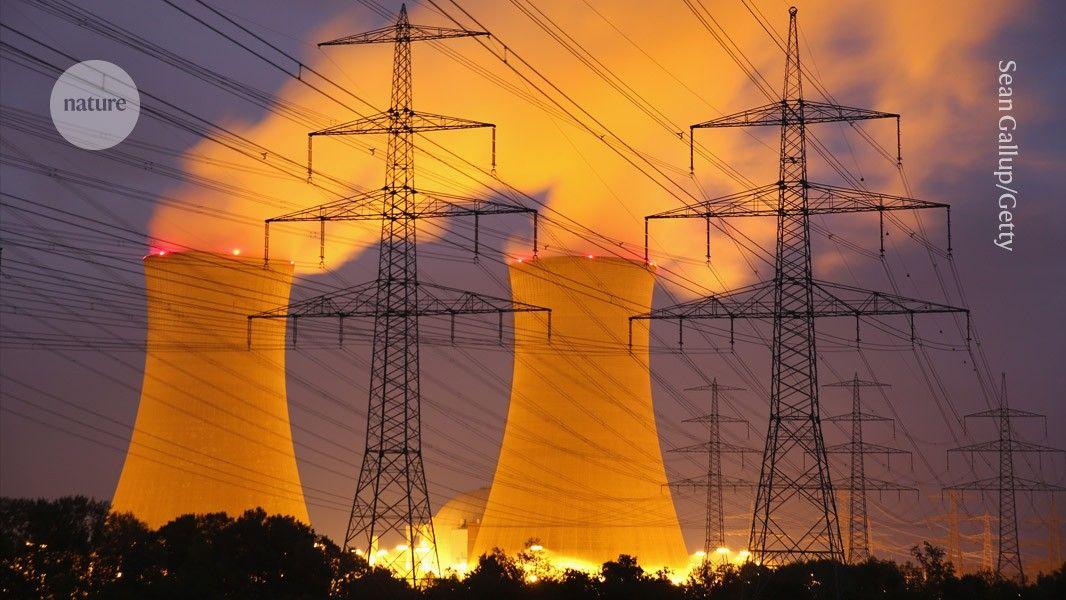AI Boom Fuels Resurgence in US Gas-Fired Power Plants
2 Sources
2 Sources
[1]
AI boom driving resurgence of U.S. gas-fired power, new life for fossil fuel usage
As utilities race to meet a surge in demand from power-hungry AI data centers, manufacturing facilities and electric vehicles, energy companies in the U.S. are planning new gas-fired power generation at the fastest pace in years, pointing to the staying power of natural gas as a source of electricity and that fossil fuels likely will have a longer runway than previously thought, Bloomberg reported Monday in a new analysis. "A few years ago, there was the expectation that solar and wind would be able to solve our additional generation needs," William Blair head of energy and sustainability Jed Dorsheimer told Bloomberg, now seeing gas accounting for as much as 60% of new power generation, adding that calls for peak oil and peak gas eventually will be right - but not anytime soon. Energy analysts such as Enervus and Yes Energy estimate more than 200 gas units currently are in various stages of development across the U.S. with plans to start up between now and 2032, for as much as 100 GW of power, or enough for nearly 80M homes. The resurgence of natural gas will bring major environmental consequences, though both sides dispute in which direction. Natgas advocates say the fuel helps in achieving emissions goals because it replaces coal and serves as a bridge to clean energy sources, but critics note that new plants could stay in service for 40 years or more, and their methane emissions will stay in the atmosphere for decades longer, so their approval would effectively lock in greenhouse gas emissions long after 2035, which is President Biden's target for a zero-emission electricity sector.
[2]
AI Boom Is Driving a Surprise Resurgence of US Gas-Fired Power
Energy companies in the US are planning new natural gas-fired power generation at the fastest pace in years, one of the clearest signals yet that fossil fuels are likely to have a longer runway than previously thought. From Florida to Oregon, utilities are racing to meet a surge in demand from power-hungry AI data centers, manufacturing facilities and electric vehicles. The staying power of gas, which in 2016 overtook coal as the No. 1 US source of electricity, has surprised some experts who not so long ago had projected the era of frenzied domestic demand growth for the fuel might soon come to an end.
Share
Share
Copy Link
The rapid growth of artificial intelligence and electric vehicles is driving an unexpected revival of gas-fired power plants in the United States, challenging the transition to renewable energy sources.

AI and EV Demand Spark Gas Power Renaissance
The United States is witnessing a surprising resurgence in gas-fired power plants, driven by the burgeoning demand for electricity from artificial intelligence (AI) technologies and electric vehicles (EVs). This trend is challenging the nation's efforts to transition away from fossil fuels and towards renewable energy sources
1
.Unprecedented Growth in Power Demand
The rapid adoption of AI and EVs has led to an unprecedented surge in electricity consumption. Data centers, which are crucial for AI operations, are projected to consume 35 gigawatts of power by 2030, equivalent to the electricity usage of the entire state of Florida
2
. This massive increase in demand is outpacing the growth of renewable energy sources, necessitating the continued use and expansion of gas-fired power plants.Gas Plants: A Bridge to the Future
Despite the push for cleaner energy, gas-fired power plants are seen as a crucial bridge technology. They offer reliability and can quickly ramp up production to meet peak demand, qualities that are essential for supporting the intermittent nature of renewable energy sources like wind and solar
1
. The flexibility of gas plants makes them an attractive option for grid operators seeking to balance the variable output of renewables with the consistent power needs of AI and EV infrastructure.Environmental Concerns and Regulatory Challenges
The revival of gas-fired power plants has raised concerns among environmentalists and policymakers. While natural gas is cleaner than coal, it still contributes significantly to greenhouse gas emissions. This trend potentially conflicts with ambitious climate goals set by various states and the federal government
2
. Regulators and utility companies are grappling with the challenge of meeting the surging electricity demand while adhering to emission reduction targets.Related Stories
Impact on Energy Markets and Infrastructure
The unexpected demand for gas-fired power is reshaping energy markets and infrastructure plans. Utility companies are reassessing their long-term strategies, with some delaying the retirement of existing gas plants and others proposing new facilities
1
. This shift is also influencing natural gas prices and pipeline infrastructure, as the sustained demand for gas in power generation affects the broader energy landscape.Future Outlook: Balancing Growth and Sustainability
As the AI boom continues to drive electricity demand, the energy sector faces the complex task of balancing rapid technological growth with sustainability goals. The situation underscores the need for innovative solutions in energy storage, grid management, and the acceleration of renewable energy deployment to meet the growing power needs of the digital age while minimizing environmental impact
2
.References
Summarized by
Navi
Related Stories
Recent Highlights
1
OpenAI releases GPT-5.2 AI model after code red memo targets Google's Gemini 3 threat
Technology

2
Disney invests $1 billion in OpenAI, licenses 200+ characters for Sora AI video generator
Technology

3
OpenAI faces wrongful death lawsuit after ChatGPT allegedly fueled murder-suicide tragedy
Policy and Regulation








